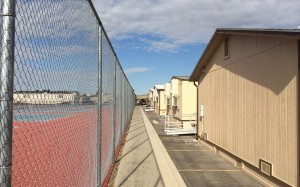The West Ada School District will run another bond issue in an attempt to ease overcrowding issues.
But first, district officials want to look at the ingredients of a bond proposal — and crunch the precinct-by-precinct numbers from Tuesday’s vote.
“The kids aren’t going away and the need isn’t going to decrease,” West Ada Superintendent Linda Clark said Wednesday.
One day earlier, the state’s largest school district fell short, in the day’s biggest election. West Ada’s $104 million bond issue picked up 63 percent support — enough to pass, said Clark, in 48 states. But that left West Ada short of the two-thirds supermajority required under the Idaho Constitution.

District officials said the bond issue was needed to handle continued enrollment increases and overcrowding, particularly at the middle school level. Over half of the money, $60 million, would have gone to build two new middle schools. (For details about the bond issue, click here.)
The failed bond issue will not have an immediate effect on conditions in West Ada schools — such as Lake Hazel Middle School, the district’s most overcrowded middle school. Completed in 1980 and built to a capacity of 1,000 students, Lake Hazel opened its doors this week to a projected enrollment of more than 1,450.
However, the district was hoping to have its first new middle school online by fall of 2016, to alleviate crowding at Lake Hazel. And that means West Ada could be on a tight deadline, in terms of running and passing another bond issue; once funded, a middle school takes about 18 months to build.
The earliest West Ada could run another bond issue in Nov. 4, the date of the general election. On Wednesday, Clark did not commit to a timetable. “It takes a lot of analysis.”
The district is bracing for more growth, layered on top of 2013-14 enrollment that eclipsed the 36,000 mark. Clark expects enrollment to increase by about 700 this year, and says the sprawling suburban district appears poised for another growth spurt.
While the stakes were high for West Ada, this did not result in a high voter interest — or high turnout. No groups mobilized in support of the bond issue, or in opposition. Only 9.5 percent of the district’s eligible voters cast a ballot.
In retrospect, Clark said timing was a factor. This was the first time West Ada ran a bond issue in August — and this year’s election date coincided with the second day of the school year. This made it more difficult to get supporters to the polls.
“These issues are won or lost with the parents,” she said.
But by Wednesday morning, Clark said she had already received emails from some parents, urging the district to try again.
Statewide results
All told, voters across the state approved a little more than $12.1 million in school spending — but Tuesday’s results were a mixed bag.
Districts fared well with levy proposals, which needed only a simple majority to pass. But bond issues — involving long-term debt to complete long-range facilities projects — failed in West Ada and three other school districts across the state.
Here’s a statewide roundup:
Levies
Wilder: The second time around, voters approved a two-year, $598,000 levy designed to head off a pay-to-play program in athletics, and help cover rising health insurance costs.
On Tuesday, the levy received 67 percent support, easily surpassing the simple majority needed for passage. In May, an identical levy fell 25 votes shy of passing.
Wilder is the poorest school district in Idaho, as defined by the percentage of students qualifying for free or reduced-price lunch. Nearly 94 percent of students qualified for subsidized lunch in 2013-14; the statewide average is 48.8 percent.
Lapwai: Voters rejected a supplemental levy for the second time in three months. On Tuesday, the district floated a $250,000 levy — half of what the district sought in May. The reduced levy received only 41 percent support, according to the Lewiston Tribune.
In 2013-14, nearly 89 percent of Lapwai students qualified for free or reduced-price lunch, ranking No. 2 in the state.
Bruneau-Grand View: In another one of the state’s poorest school districts, the third time was the charm. Voters said yes to a one-year, $600,000 levy; in March and May, voters rejected two-year, $1.2 million levies. (Source: Owyhee Avalanche.)
Nearly 70 percent of Bruneau-Grand View’s students qualified for subsidized lunch in 2013-14, ranking No. 18 in the state.
Madison: A $1.99 million levy passed with 62 percent backing. The Eastern Idaho school district will use the money to restore three teaching days, update textbooks and install video cameras.
Swan Valley: Voters approved a five-year, $200,000 plant facilities levy for this elementary school district in rural Bonneville County. The levy passed with 61 percent support.
Council: A two-year, $155,770 levy passed with 63 percent support.
Bond issues
Teton: A $19 million bond issue received 55 percent support, falling short of the two-thirds threshold. The bond issue would have funded two new elementary school buildings and upgrades to other buildings.
New Plymouth: An $8.6 million bond issue passed with 73 percent support. (Source: KIVI TV.)
Notus: Voters rejected a $4.4 million bond issue to replace a nearly 90-year-old elementary school. The bond issue received 63 percent support. (Details from the Idaho Press-Tribune.)
Wendell: A pair of bond issues fell short of the two-thirds mark: a $1.5 million facilities bond and a $2.5 million bond to create a budget reserve fund. (Details from The Times-News.)
In this week’s “Making the Grade” segment, Kevin Richert talks with Michelle Edmonds of KIVI and KNIN about the West Ada school bond election — and the bigger picture of school financing.
